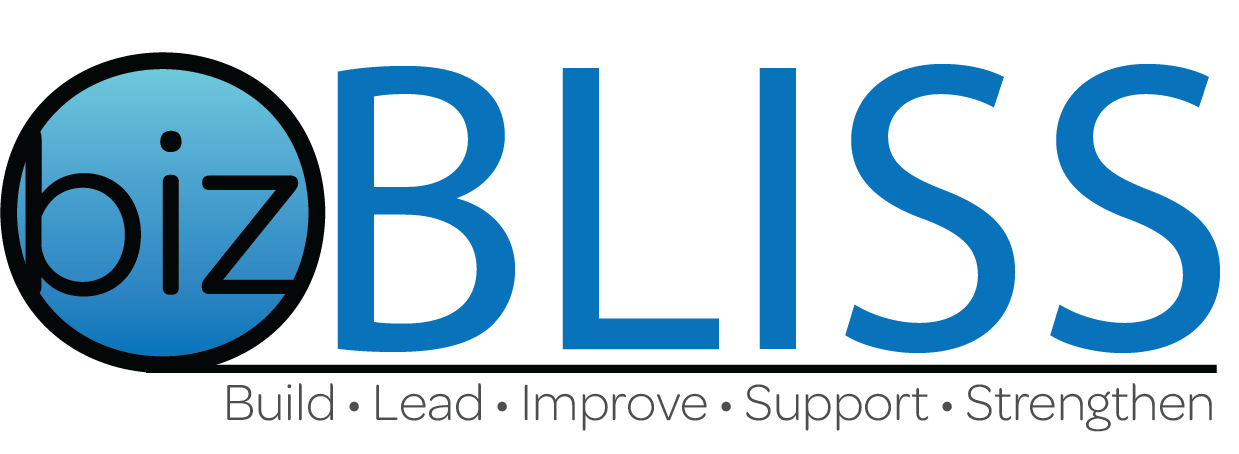Key ways to simplify your business operations

Key ways to simplify your business operations
Running a business can be complex. It involves juggling multiple tasks, managing people, and making critical decisions.
Yet, the key to success often lies in simplicity. Simplifying your business operations can lead to improved productivity, efficiency, and overall growth.
This article aims to guide you on how to simplify your business operations. We will explore strategies to automate tasks, streamline processes, and effectively manage your operations.
We will also delve into how to leverage technology for financial data integration. This can help you make informed decisions and recognize potential growth opportunities.
By the end of this article, you will have a clear understanding of how to turn business challenges into growth opportunities.

Stay with us as we unravel the key ways to simplify your business operations and drive your business towards success.
Understanding the Need to Simplify Business Operations
In today’s fast-paced business environment, complexity often becomes a silent obstacle. It creeps into daily operations, slowing down processes and clouding decisions.
Over time, unnecessary complications can hinder growth and innovation. They create barriers to effective communication and decision-making.
Simplifying business operations is not just a trend. It is a necessity for staying competitive and agile in the market.
By streamlining your processes, you create room for flexibility and adaptability. These are critical traits for navigating an ever-evolving business landscape.
Furthermore, simplicity enhances the customer experience. It leads to faster service delivery and improved satisfaction, fostering loyalty.
Knowing where and how to simplify is key. It requires a deliberate effort to assess current processes, identify redundancies, and implement changes.
The Impact of Complexity on Your Business
Complex operations can have serious consequences. They lead to inefficiencies and increased costs, affecting the bottom line.
Moreover, complexity complicates communication, causing misunderstandings among team members. This can delay project completion and reduce employee morale.
High complexity also makes businesses less responsive to market changes. It hinders the ability to seize new opportunities quickly and effectively.
Recognizing Growth Opportunities in Challenges
Every business faces challenges. However, in each challenge lies a potential growth opportunity.
By simplifying operations, you can turn obstacles into stepping stones. Streamlined processes improve problem-solving and innovation.
Moreover, addressing challenges head-on fosters a culture of resilience and adaptability. It inspires teams to think creatively and embrace change.
Turning challenges into opportunities involves strategic planning and innovative thinking. It requires a shift in perspective from seeing problems to envisioning possibilities.
Automating Tasks for Efficiency
Automation transforms operations by performing repetitive tasks quickly and accurately. Freeing employees from mundane duties lets them focus on value-driven projects.
When you automate tasks, operational efficiency increases significantly. It reduces manual errors and enhances consistency in your processes.
Automation tools can help you save time and cut costs. They support your team by handling tedious and time-consuming activities.
To begin with automation, identify areas where tasks are repetitive or time-intensive. Here’s where automation can make a meaningful impact.
Benefits of Automating Tasks:
- Reduces errors: Automation minimizes human error.
- Improves consistency: Ensures tasks are completed in the same way each time.
- Increases productivity: Frees up time for strategic work.
By embracing automation, your business can become more agile. Automating tasks paves the way for scalability and growth.
Automation is not just for large corporations. Small businesses can benefit from using automation to streamline daily operations and enhance productivity.
Identifying Tasks to Automate
Begin by assessing your day-to-day operations. Identify repetitive tasks that consume valuable time but don’t require complex decision-making.
Look for tasks with clear, defined rules. Processes like data entry, email responses, or scheduling are prime candidates.
Automation should enhance efficiency, not complicate it. So select tasks where automation can make a significant impact without causing disruptions.
Tools for Automation
Selecting the right tools is crucial for successful automation. Tools should align with your business goals and integrate seamlessly with existing systems.
Consider tools that cater to your specific needs. For instance, Customer Relationship Management (CRM) systems can automate client interactions.
Explore tools that offer scalability. They should grow alongside your business, allowing for additional functionality as needs evolve.
The right automation tool will fit your unique workflow. It should empower you to achieve greater efficiency without sacrificing quality.
Streamlining Processes to Improve Productivity
Streamlining processes is essential for improving productivity. It involves refining workflows to be leaner and more efficient.
Effective streamlining removes bottlenecks. It ensures tasks flow smoothly from one stage to the next without unnecessary delays.
Process streamlining can significantly boost operational efficiency. It helps businesses respond more quickly to customer demands and market changes.
To streamline processes, begin by identifying inefficiencies. Document current workflows and pinpoint areas of delay or redundancy.
Streamlining often requires rethinking traditional methods. It may involve restructuring teams or adopting new technologies to support efficiency.
Here are some effective strategies for streamlining processes:
- Simplify procedures: Strip away unnecessary steps.
- Optimize resources: Ensure optimal use of manpower and materials.
- Enhance communication: Establish clear communication channels to prevent misunderstandings and errors.
Continuous improvement is key. Regularly review processes to identify new areas for enhancement as your business evolves.
Techniques for Process Streamlining
Begin with a process audit. Examine current workflows to identify steps that cause delays or redundancies.
Consult with your team for insights. They often have firsthand knowledge of inefficiencies within the processes.
Implement process mapping tools. These can visually represent workflows, making it easier to identify and rectify issues.
Streamlining isn’t a one-time effort; it’s an ongoing process. Regular updates ensure that your operations remain efficient and responsive to change.
The Role of Technology in Streamlining
Technology plays a pivotal role in streamlining processes. It offers tools to automate manual tasks and integrate systems seamlessly.
Digital solutions allow for real-time data access. This enables quick decision-making and improved coordination across teams.
Utilize project management software to track progress and manage workloads effectively. These tools can automate routine tasks and reduce potential errors.
Integrating technology ensures that all parts of your operation work in harmony. It bridges the gap between teams and improves overall operational efficiency.
Effective Management for Operational Efficiency
Effective management is the cornerstone of operational efficiency. It involves aligning resources and processes with strategic objectives.
Managers play a vital role in streamlining operations. Their actions can greatly impact an organization’s capability to adapt and thrive.
A focus on operational efficiency reduces waste. It increases the organization’s ability to produce and deliver products or services effectively.
Managers should prioritize clear communication. Understanding goals and expectations at all levels is crucial for seamless operations.
Here are strategies for achieving effective management:
- Set clear objectives: Define what success looks like.
- Encourage feedback: Create a culture where employees feel heard.
- Monitor progress: Use data to inform decisions and track outcomes.
Each strategy contributes to a more agile and dynamic business environment. Strong management practices foster a culture that embraces change.
Aligning Management with Business Goals
Aligning management with business goals ensures that every decision supports the broader mission. It’s about connecting daily actions with long-term vision.
Clear goals guide management actions. They serve as benchmarks for evaluating progress and success.
Alignment improves resource allocation. It ensures that time and effort are focused on initiatives with the greatest impact.
Leadership and Culture in Simplifying Operations
Leadership is vital in simplifying operations. Leaders must model and inspire a culture of efficiency and effectiveness.
They set the tone for what’s valued within the organization. This includes innovation and a focus on core priorities.
A strong culture encourages continuous improvement. It empowers teams to seek better ways of operating and achieving their goals.
Leveraging Technology for Financial Data Integration
Incorporating technology into financial data integration is essential for modern business operations. It significantly enhances decision-making.
Technology offers solutions that enable seamless data flow. This makes tracking and analyzing financial information more efficient.
Integrating financial data automates information collection. This reduces errors and ensures accuracy across platforms.
The process often involves selecting technology tools that best fit the business needs. Compatibility and user-friendliness should be top priorities.
Consider using systems that facilitate easy data access. These systems can provide insights and help with strategic planning.
Here are steps to leverage technology for integration:
- Evaluate current systems: Understand existing capabilities.
- Select tools: Choose technology that aligns with business needs.
- Implement solutions: Ensure a smooth transition with trained staff.
Technology also supports real-time financial reporting. This improves transparency and responsiveness to market changes.
Choosing the Right Technology Tools
The selection of technology tools can impact efficiency. It’s crucial to choose those that align with your organizational goals.
The right tools should integrate well with existing systems. They must offer scalability and cater to future needs.
Additionally, prioritize user-friendly interfaces. This ensures that staff can quickly adopt and utilize these tools.
Benefits of Cloud-Based Solutions
Cloud-based solutions offer distinct advantages for financial data integration. They provide real-time data access from anywhere, facilitating collaboration.
These solutions typically require less upfront investment. They offer flexible pricing models that can reduce operational costs.
Moreover, cloud services ensure data security. Regular updates and backups protect against data loss or breaches.
Transforming Obstacles into Growth Opportunities
Businesses often encounter challenges that seem insurmountable. However, these hurdles can be reframed as growth opportunities. The key lies in adopting a proactive mindset.
Analyzing obstacles in detail can uncover underlying growth potential. This involves identifying areas where improvements can lead to substantial gains. Embrace problems as puzzles that, once solved, propel the business forward.
Shifting perspective enables innovation. It encourages a culture of resilience, driving teams to think outside the box. Experimentation and adaptability become essential components of this process.
Ultimately, businesses that view obstacles as stepping stones achieve long-term success. By transforming challenges, they not only survive but thrive in competitive landscapes.
Personalizing Business Strategies
Personalization is crucial in crafting effective business strategies. Tailoring solutions to meet specific client needs enhances satisfaction and loyalty.
Each client has unique requirements. Understanding these nuances allows businesses to deliver bespoke solutions that resonate.
Personalized strategies often lead to stronger client relationships and increased customer retention. They serve as a powerful differentiator in a crowded market.
Building Strong Client Relationships
Building strong relationships with clients is fundamental to business success. Trust and communication are central to this endeavor.
Regular interactions with clients help to understand their evolving needs. This fosters mutual respect and collaboration over time.
Moreover, strong relationships often lead to valuable referrals. Satisfied clients become advocates, helping to grow your business through their networks.
Conclusion: Cultivating a Culture of Continuous Improvement
Cultivating a culture of continuous improvement is essential for business growth. It requires a commitment to learning, development, and adaptability. Such a culture empowers teams to identify and address inefficiencies proactively.
Fostering this environment involves encouraging feedback from all levels. This feedback loop ensures processes remain effective and aligned with business goals. Employees should feel valued and heard, driving motivation and innovation.
By embedding continuous improvement into the company’s DNA, businesses stay agile and competitive. It transforms organizations into dynamic entities, capable of thriving amidst change. Embrace the journey of improvement as a pivotal strategy for success.
